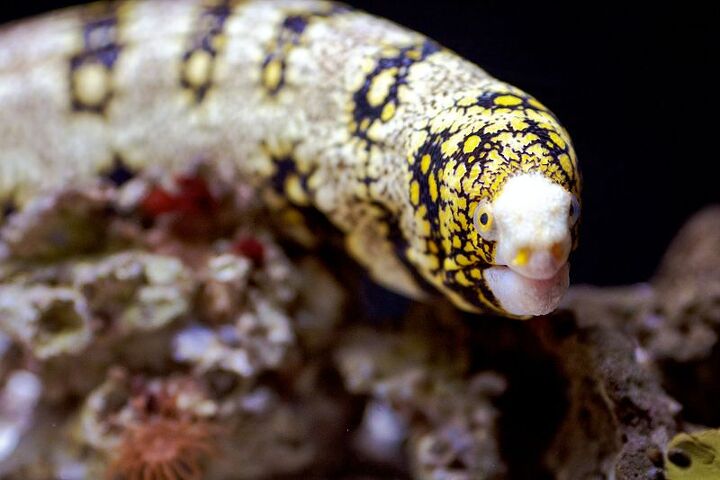372 Views
Saltwater Eels

by
Amy Tokic
(IC: )
Published: January 21st, 2014

About Saltwater Eels
Size
Large
Group
Saltwater
Temperament
Aggressive
Aquarium Size
Large (55 gal)
Swimming Region
Bottom
Fish Water Condition
Suitable Tank Mates
Large Angelfish, Pufferfish, Lionfish and Tangs
Difficulty Of Care
Weekly care
General description
Most species of saltwater eel grow well over a few feet in length and require extremely large aquariums. Eels are also a nocturnal species and enjoy dimly lit aquariums with plenty of caves and crevices in which to hide. In the wild, eels often live in groups in what are known as “eel pits.” Eels are also primarily bottom dwellers and prefer aquariums with soft sand substrates which they can burrow into.

Amy Tokic
Amy Tokic, Editor of PetGuide.com, is a passionate animal lover and proud pet parent of Oscar, a Shih Tzu/Chihuahua cross, and Zed, a Japanese Chin. Her love of animals began in kindergarten, when she brought her stuffed dog Snoopy into class with her every day. Now, she writes about her adventures in pet ownership and tirelessly researches products, news and health related issues she can share with other animal enthusiasts. In her free time, Amy loves perusing used book and record stores, obsessing over the latest pet products available and chasing squirrels with wild abandon (a habit attributed to spending too much time with her pooches).
More by Amy Tokic
Published January 21st, 2014 12:00 AM
























